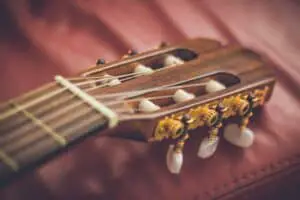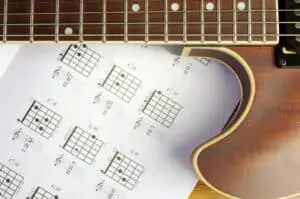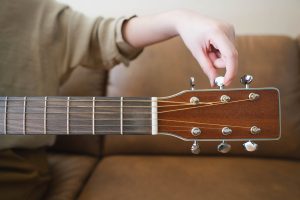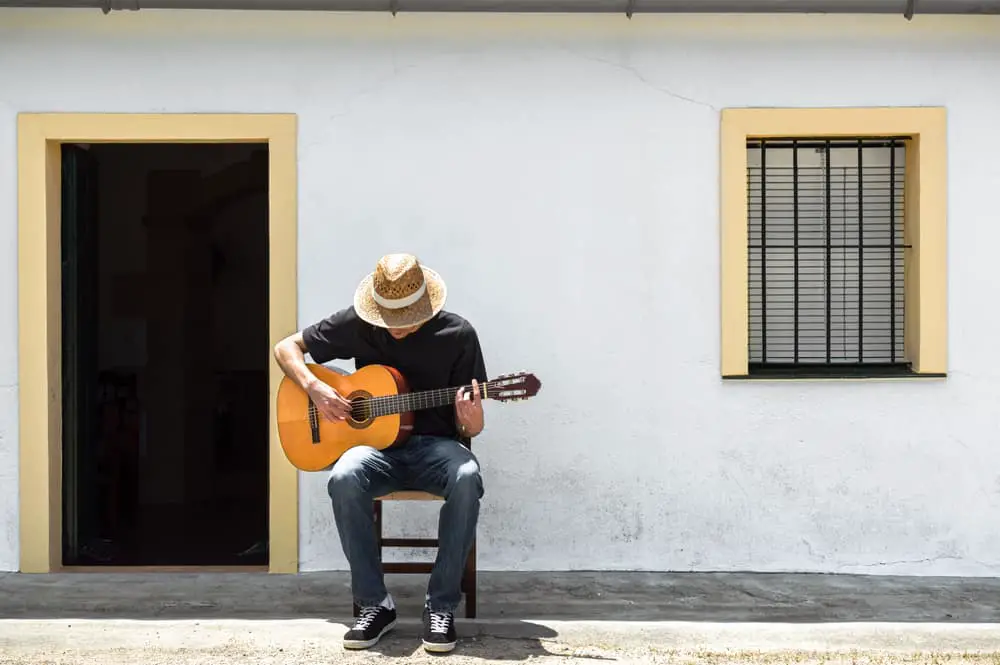
Spanish guitars are often associated with Flamenco music and art, a traditional musical style originating in the southern regions of Spain. The Spanish guitar has a history dating back to the Middle Ages when it was often used to accompany singing. Over time, it evolved into its current form and became an iconic instrument for musicians all over the world. Today, Spanish guitars can be played in a variety of genres, from jazz to rock, and remain popular among musicians around the globe.
A Spanish guitar is a musical instrument that originates from the Iberian Peninsula. It is known for its rich and mellow sound, rectangular-shaped body, and high frets. The traditional design of these guitars includes six nylon strings that are tuned to E-E-B-G-B/D and one steel-string at the bottom.
In this article, we will discuss the history and evolution of Spanish guitars. We will also examine how these guitars are constructed, their impact on the music industry, and their popularity among musicians today.
Origin of Spanish Guitar
The Spanish guitar can trace its roots back to the Middle Ages, when it was used primarily as a folk instrument for singing. Through the years, various modifications were made to the design of this iconic guitar, and it eventually rose in popularity among musicians across Spain and beyond.
One of the most significant milestones in the evolution of the Spanish guitar was the creation of classical or flamenco guitars by Antonio de Torres Jurado in 1846. This design featured a larger body, higher frets, and a tension-adjusting device that allowed musicians to change their strings more easily.
Since then, Spanish guitars have been used in many different genres of music, from jazz and rock to Flamenco and Latin American styles. Today, they remain a popular choice for musicians of all skill levels, from beginners to professionals.
The Different Types of Spanish Guitars

There are three main types of Spanish guitars: the classical guitar, the flamenco guitar, and the acoustic guitar.
Classical Guitar
Classical guitars are typically used for solo performances, as they produce a softer sound than other types of Spanish guitars. They are typically made with cedar or spruce wood and have nylon strings. Classical guitars are also known for their large size, which can make them difficult to transport and store.
Advantages
- A softer sound that is well-suited for solo performances
- Typically made with high-quality materials like cedar or spruce wood
Disadvantages
- Large size can make them difficult to transport and store
- Nylon strings can be less durable than other types of strings
Flamenco Guitar
Flamenco guitars are smaller in size than classical guitars, which makes them more convenient to carry around. They are also typically made with cypress wood, which gives them a brighter sound. Flamenco guitars have nylon strings and are often used for Flamenco music, a traditional musical style from the southern regions of Spain.
Advantages
- Their smaller size makes them easier to transport and store
- Produces bright and clear sound that is well-suited for Flamenco music loud, the neck is tapered and has a flat back
Disadvantages
- Nylon strings may be less durable than other types of strings
Acoustic Guitar
The acoustic guitar is the most common type of Spanish guitar, which makes it ideal for a variety of situations. It can produce both a loud and soft sound, depending on how hard you play it. Acoustic guitars are typically made with mahogany or cedar wood and have steel strings. They can be used in a wide range of musical genres, such as jazz, rock, blues, country music, and more.
Advantages
- Can be used for a variety of genres
- More affordable than other types of Spanish guitars
Disadvantages
- It may not be as durable as other types of Spanish guitars
How Are Spanish Guitars Constructed?
Spanish guitars are typically made with cedar or spruce wood, which gives them a rich and mellow sound. The body is usually rectangular-shaped and has a hole in the center that helps project the sound. The neck is tapered and has a flat back, which makes it easier to hold down the strings when you’re playing. The frets are also higher on Spanish guitars, which allows for more accurate finger placement.
Different Parts of a Spanish Guitar
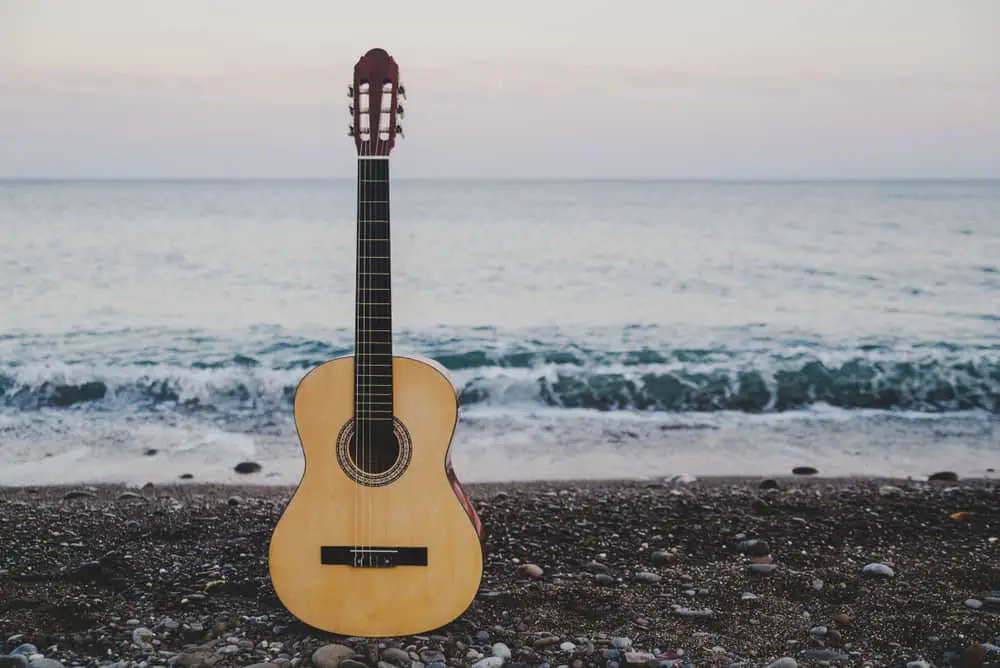
There are several different parts of a Spanish guitar, including the body, neck, headstock, strings, tuning pegs, and more.
Body
The body is the largest part of the guitar and is where the sound hole is located. The sound hole helps project the sound of the guitar.
Neck
The neck is attached to the body of the guitar and is where the strings are located. The neck is tapered so that it’s easier to hold down the strings when you’re playing.
Headstock
The headstock is located at the end of the neck and is where the tuning pegs are located. The tuning pegs help tune the strings of the guitar.
Strings
There are typically six strings in a Spanish guitar, which are made with nylon or steel. The strings produce the sound of the guitar when they’re plucked or strummed.
Tuning Pegs
The tuning pegs are used to tune the strings and can be found on the headstock of the guitar. These pegs spin in order to adjust the tension of the strings, which allows you to play different notes and chords.
Factors to Consider When Choosing a Spanish Guitar
When choosing a Spanish guitar, there are several factors you’ll want to consider, such as the type of music you want to play, your budget, and the size of the guitar.
Type of Music
One of the first things you’ll want to consider is the type of music you want to play. If you’re looking to play Flamenco music, then you’ll want to choose a Flamenco guitar. If you’re looking for a guitar that can be used for a variety of genres, then an acoustic guitar would be a good option.
Budget
Another factor to consider is your budget. Guitars can range in price from hundreds to thousands of dollars. If you’re a beginner, then you may want to choose a more affordable option. If you’re looking for a high-quality guitar, then you’ll be willing to spend more money.
Size
The size of the guitar is also something to consider. Acoustic guitars are typically larger than electric guitars, so if you’re looking for a smaller guitar, then an electric guitar would be a good option. Flamenco guitars are also small in size, which makes them easy to transport and store.
Conclusion
Spanish guitars are a type of acoustic guitar that is typically used for Flamenco music. They are smaller in size and have nylon strings. Spanish guitars are made with cedar or spruce wood and have a rectangular body. When choosing a Spanish guitar, you’ll want to consider the type of music you want to play, your budget, and the size of the guitar.


